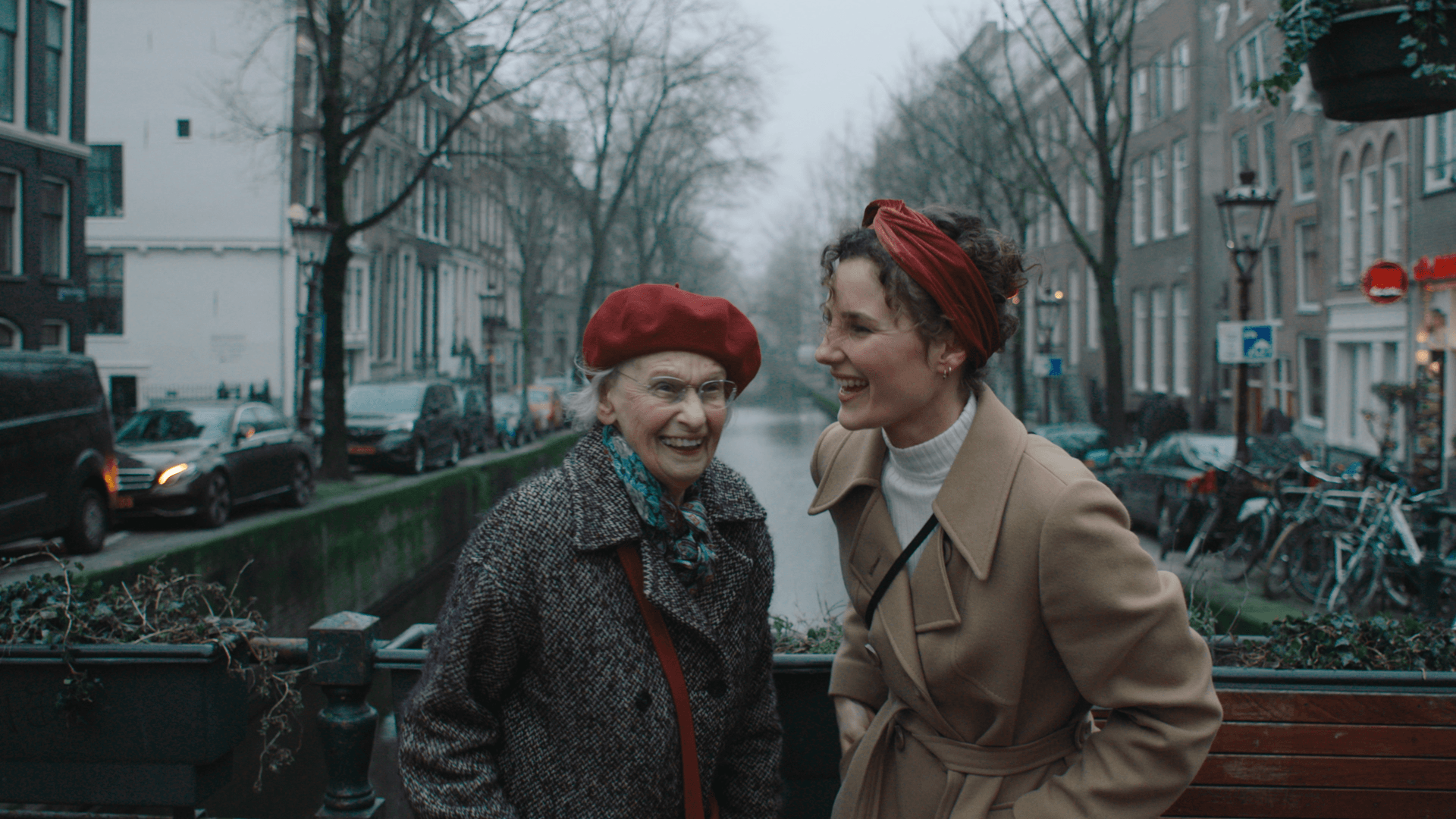Beyond its bicycles and boats, Amsterdam sees half a million daily trips on its trains. Thanks to a tap-in, tap-out citywide system, travel is now easier than ever, helping people like 90-year-old Clarys to explore her favorite city.
October 14, 2025

After landing at Amsterdam’s Schiphol airport, tourists can hop on a train to the city’s imposing Centraal Station and, from there, grab a tram to their hotel. A couple days later, after bouncing between the vibrant city’s highlights by foot, bike and a bit of public transport, they might board a train to Zaanse Schans to visit the iconic windmills that creak along the Zaan River. Later they can take another train to the lively university town of Utrecht for a concert before riding the rails back to Schiphol.
And they can do it all without ever changing money, wrangling with ticket machines or even downloading a local transit app.
That’s possible thanks to open loop technology for the country’s tap-in, tap-out system, which calculates distance-based travel charges. Travellers in the Netherlands (visitors and local commuters alike) simply tap their payment cards, smartphones or wearables to ride any of the country’s trains, trams or buses — even rental bikes.
The Netherlands, which is approximately the size of Maryland, is the first country in the world to launch nationwide contactless payments for public transportation. Partnering with Mastercard, it has built its OVpay system on open loop technology, which has the potential to help ease congestion in fast-growing cities worldwide. Today, at least 500,000 trips are made a day in the Netherlands using open loop, and London and New York use it for the majority of their overall transit.
Peter van Dijk, CEO of Translink, the company which rolled out the Netherland’s OVpay system together with all the public transportation operators in 2023, hopped on a call with the Mastercard Newsroom to share how it’s working out.
Van Dijk: The Netherlands is one of the few countries in the world [that] has for a long time had one payment method for all modalities — bus, tram, metro, train, boat, your bicycle, a lot of things.
We saw the developments around smartphones and contactless payments] and we said, hey, all our passengers are experiencing this. This type of payment is actually possible to pay for a cup of coffee easily. So why should we not introduce this payment method also in public transport? It was a very logical step for the operators and us to invest in open loop.
Van Dijk: There are a few hurdles, but the biggest one is that because we are in a cooperation, with nine operators and serving a whole country, we have a lot of stakeholders, especially the passenger. So we spent a lot of money and energy and time to create a common “customer journey” for open loop in public transport. And then we thought of all the services those passengers need and how to define them, a unified service concept.
Upgrading our infrastructure, because we have a relatively old infrastructure was also a big one. And I would say the third one is, is that TransLink is set up as the merchant of record, and not the operator. Normally they would say that the railway was the merchant, and now we are the merchant. So that was from an ecosystem point of view, that was a little bit of making sure that everybody understands how we collect money and pay it to the operators.
Van Dijk: Nationwide, let's say a quarter of journeys are now already done with open loop. It's so easy for customers to use. We had a big event in Amsterdam called Sail in August, which is all kinds of tall ships in the harbor. Local people who are normally not taking public transport were advised to take public transport because it's such a big event , and more than 50% of the travels were done with an open loop card during this event.
For tourists, they don't have to buy cards, they don't have to top up the cards. What we are doing with open loop is actually making it very easy for passengers to just get on board and travel.
Beyond its bicycles and boats, Amsterdam sees half a million daily trips on its trains. Thanks to a tap-in, tap-out citywide system, travel is now easier than ever, helping people like 90-year-old Clarys to explore her favorite city.
Please accept functional cookies to watch this video.

Van Dijk: We thought also on the infrastructure side, we could save costs, because the technology we're using is less complex than with the former card-based system. Because a passenger doesn't have to buy a card, he can just use his bank card. In the Netherlands, you have to pay 7.50 Euros for an OV chip card, the current payment card, so it’s already 7.50 Euros that you don’t have to pay as a new passenger accessing the system like tourists.
Van Dijk: Start with the passenger, the passenger, the passenger. Make sure the customer journey is okay, and make sure that you have a service concept that is very much focused on a superb passenger experience. And if you do that, then you can probably be successful. Will you have challenges? Yes. Quality of service, technology, money, yes. Could be delays, could be other stakeholders. Everything is true. But my experience is that if your customer journey, your passenger service, is very good, then everybody will support the implementation.